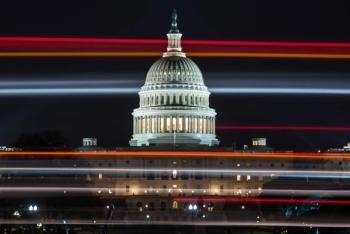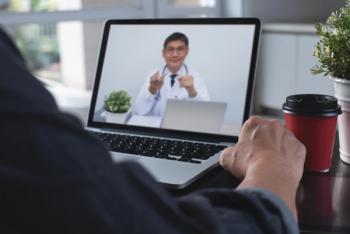
Disparities emerging in use of telehealth
Telehealth use has grown tremendously during the pandemic, but there are gaps in usage, according to a report from the U.S. Department of Health and Human Services. There are concerns about access to video telehealth services.
The use of telehealth exploded in the COVID-19 pandemic, but there are still some gaps in access, a new federal report suggests.
Specifically, there are disparities in those using audio services compared with those utilizing video services, according to the Feb. 1
The study analyzed data from the U.S. Census Bureau Household Pulse Survey from May to October 2021. As a result, the study reflects telehealth trends and usage from a large group of people. More than 800,000 people from all 50 states participated in the survey.
Healthcare leaders say telehealth can improve access to healthcare services in underserved communities, but the survey found inconsistent use of telehealth.
Overall, the study found 23% of those surveyed had used telehealth within the last four weeks. The study did show a slight decline over the course of the year.
The study found some encouraging signs about greater access among Black patients and those with lower incomes. Telehealth visits were highest among those with Medicaid (29.3%), Medicare (27.4%), Black patients (26.8%), and those earning less than $25,000 (26.7%).
However, those who utilized video typically had higher incomes compared to those who used audio services for telehealth appointments.
The highest rates of video telehealth services came from young adults between the ages 18 to 24 (72.5%), those earning at least $100,000 (68.8%), college graduates (67.4%), those with private insurance (65.9%), and White patients (61.9%).
Video telehealth usage was lowest among those without a high school diploma (38.1%), adults 65 and older (43.5%), and Latino patients (50.7%), Asian patients (51.3%) and Black patients (53.6%).
The use of video versus audio could be significant, the researchers of the study noted. While they said the effectiveness of telehealth visits is still being studied, they said early research suggests video telehealth visits are more effective.
Obviously, doctors would be able to see if patients had visible problems such as rashes or signs of allergic reactions. Doctors can at least do partial physical examinations via video, the researchers note. With video, doctors can also see at least a glimpse of the home environment and can pick up non-verbal cues, while developing a better rapport with patients, the study noted.
The researchers also note the concerns of access with video telehealth services, which could be affected by patients not having computers or broadband access.
A report released this week by Teva Pharmaceuticals and the Morehouse School of Medicine offers more evidence of
The HHS report noted telehealth use was extremely low among those who were uninsured, with 9.4% of those without insurance saying they accessed telehealth services.
The federal government relaxed restrictions on telehealth services when coronavirus cases began spiking in 2020. Telehealth use by Medicare beneficiaries
The American Rescue Plan earmarked $1 billion to boost access to telehealth and other efforts to boost access to healthcare.
While many patients value telehealth, a Rock Health survey in December found
Read more of our coverage on telehealth
















































